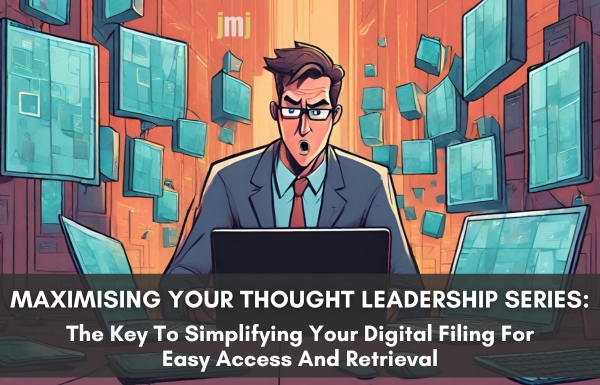This post was first written in August 2013. Now, in November 2017, I’ve provided a more in-depth update. Enjoy!
There are two aspects of the employee mindset. One is forgetting how you worked in the corporate world, or for your last employer. The other is being the Boss of your business.
Starting your business
How you think is a huge part of preparing yourself for the shift from employee to business owner. As employees we don’t think for ourselves, someone else is there telling us what we can do and when, how to dress, how to look, when to start, when to finish and there is an expectation on our productivity.
When it comes time for you to go out on your own, there isn’t anyone there telling you what you need to do. You’re allowed to think freely, but this is where the trouble begins. We replace our employers with our clients. We allow our clients to micromanage us and that is a really bad thing. 1. It’s allowing the client to maintain their bad habits, and two, it’s limiting our ability to do an amazing job for them.
For me, a large part of losing my employee mindset was beginning to think like a leader, thinking more strategic and having vision for the first time, of what I wanted and how I wanted to get it. It was realising that the buck stopped with me. I made the decisions, right or wrong and that there were consequences to these decisions.
Making your mind shift
It is you that needs to make the mind shift for yourself and your client. Without your strength, your client will see you as an employee, and this will undoubtedly cause you nothing but frustration and confusion. I know what I’m talking about because this was me when I first started out. I survived this tumultuous time in my business and came out the other side, a lot wiser.
So let’s begin by taking a look at what an employee is.
‘An employee is a person who receives a regular income and also receives one or all of these benefits such as holiday pay, annual leave, sick leave, superannuation and other benefits an employer might make available to you.’ You may work from home, or you may go to a central office to conduct your work.
A freelance Virtual Assistant does not receive any benefits such as mentioned above. The only way you are going to be paid for the work you do is to place an invoice with your client, and they, in turn, pay it.
There are however organisations that have pools of Virtual Assistants as employees. They invoice the client and in turn provide a percentage to the VA along with any negotiated benefits.
This type of arrangement is very popular in third world countries as many become virtual assistants to supplement the families income or theirs while they are at university.
Can you see why it is confusing? It’s a grey area, there is no clear-cut definition for clients, so how can we as freelance Virtual Assistants get it right ourselves?
The term itself, Virtual Assistant or VA, doesn’t do a lot for dispelling the employee mindset. After all, the word assistant means ‘a person who ranks below, a subordinate.’ Perhaps this is why there are so many different titles out there. I am an online business manager; I have long surpassed the task-orientated work I once did in the early stages of my business.
With all this confusion, it makes no wonder that our clients have problems too. It’s easy to see why some clients consider a freelance VA as their ‘assistant,’ as their employee. The line is not clear cut for them either.
This is what I did
Every time a client referred to me as ‘their assistant,’ I would politely remind them that I wasn’t, that I was a business owner just like them. That while I was there to help them grow their business, I saw myself as a partner to their business, not support. It did take a little longer for some to get the picture. This is why it’s important that when you have dealings on behalf of your client, and you use an email they’ve set up for you. Your title is not assistant.
For example, I have email accounts with several of my clients, and under my name, in their company signature, it says ‘online business manager.’
So when a prospective client contacts me, and we discuss their requirements, depending on the type of work they want me to do, depends on whether or not we have the ‘Email conversation.’
To me, it’s about remembering that you are the boss of your business, you’re not an employee. Here are five things I live by for JMJ – EA for a Day:
- I make the rules for my business.
- I decide who I work with and who I don’t.
- I determine the hours I put in.
- I determine the type of work I want to do
- I provide the expertise my client needs to help them move forward.
Changing the course
It’s up to you to keep changing the direction of your business. This is why a business plan is meant to be flexible, there are no hard and fast rules, and it should be looked at often. As an employee, you couldn’t change or had very limited scope to change the course of something you were working on and if you failed, there were consequences that made you feel terrible, maybe even other people yelling at you. Being in business is no different, you may yell at yourself, but you will look at failure differently, it’s a learning. If a mistake as an employee was big enough, you might have found yourself out of the door, but when you own a business, you can’t do that. You need to think outside the square to implement change that may change the course of your business. It isn’t a bad thing.
Invest in yourself
This is always a good one, and we don’t do it enough. We don’t have time, we don’t have the money, we don’t know how to because as an employee, we didn’t. Our employers may have if they had training budgets, but that didn’t always happen. We got our skills mostly by working the job. I’ve spent countless thousands up-skilling myself over the years I’ve been in business. While some were wise decisions, others were not. But that’s okay because I learnt so much about what I shouldn’t do. I got a mentor, I took online classes, I joined great online communities, I purchased courses and I networked with like-minded people. You are the biggest asset your business has.
It’s up to you to implement change
It’s your business, and you’re the boss, you are accountable for the direction it takes. Not me, not your client, but you. Stop looking for others to solve your problems. By all means, listen to advice, that you ask for, opinions and guidance, but you are the decider on what you implement and what you don’t.
Attitude has a lot to do with how you come off to your clients. It’s all about your heart, and when you explain to clients, you’re not their assistant, but you’re there to partner with them in helping them achieve the best for them and their business. It puts you in a place of power and respect.
Photo by Relive Media.co.uk on Unsplash




